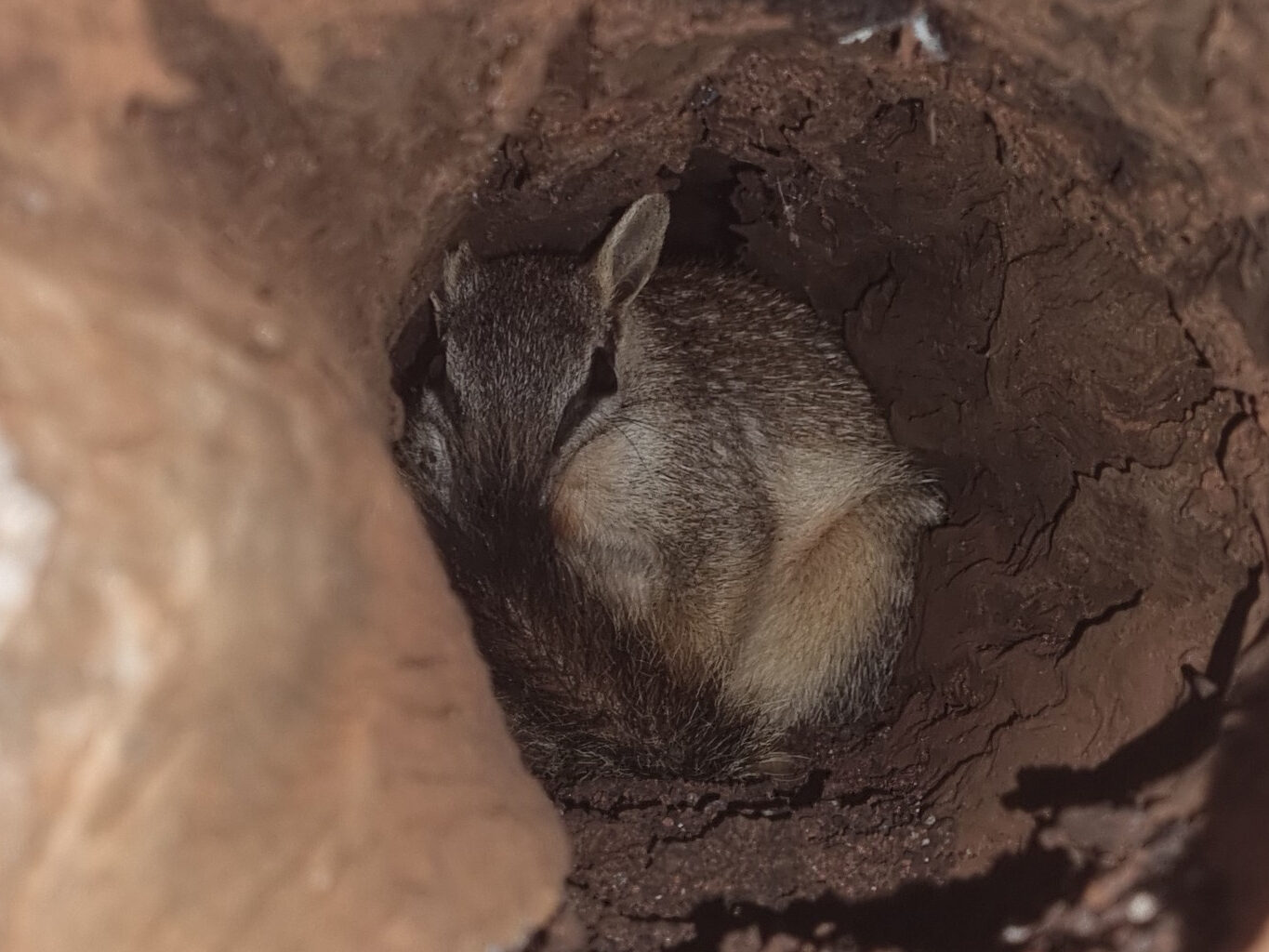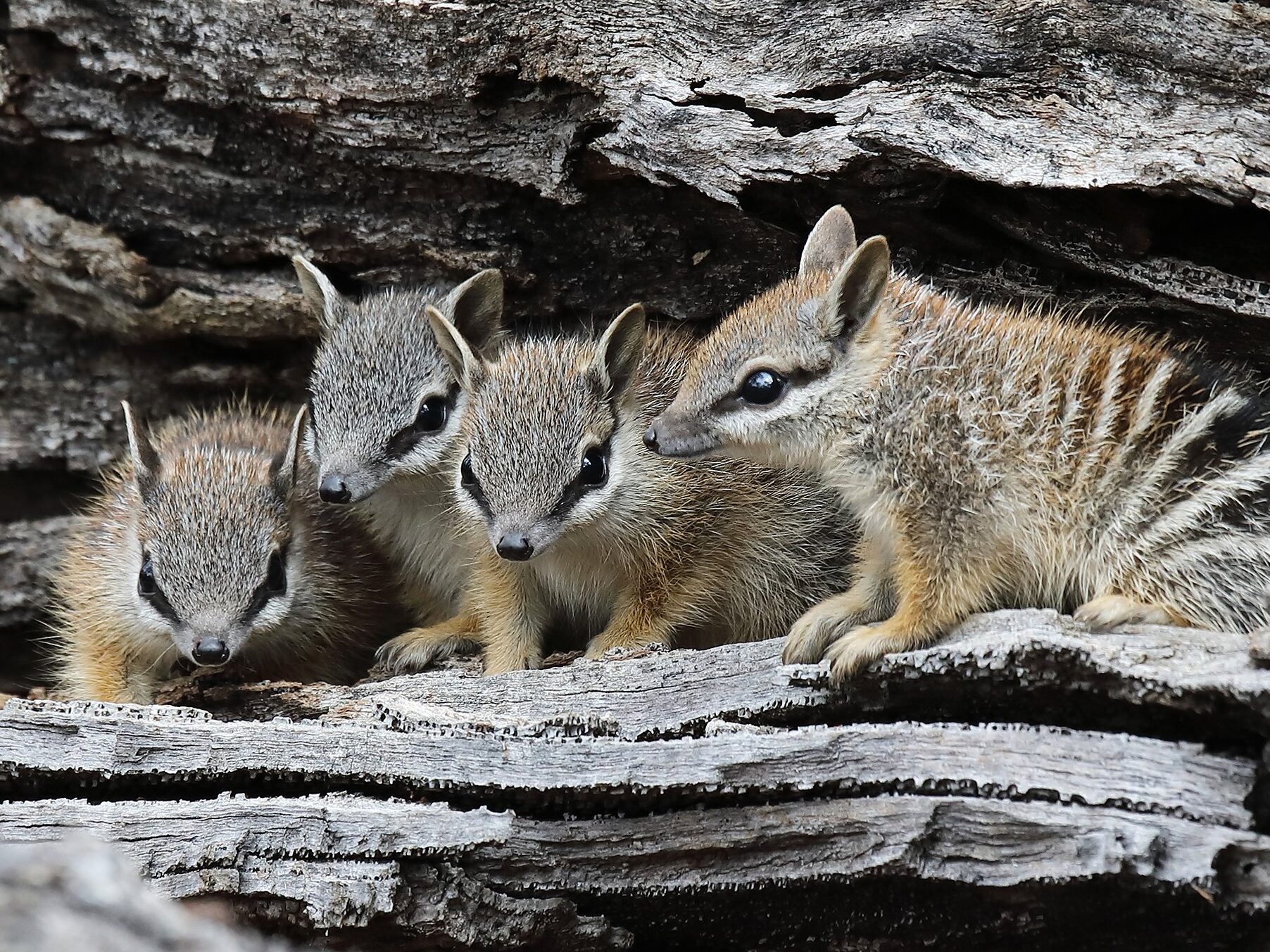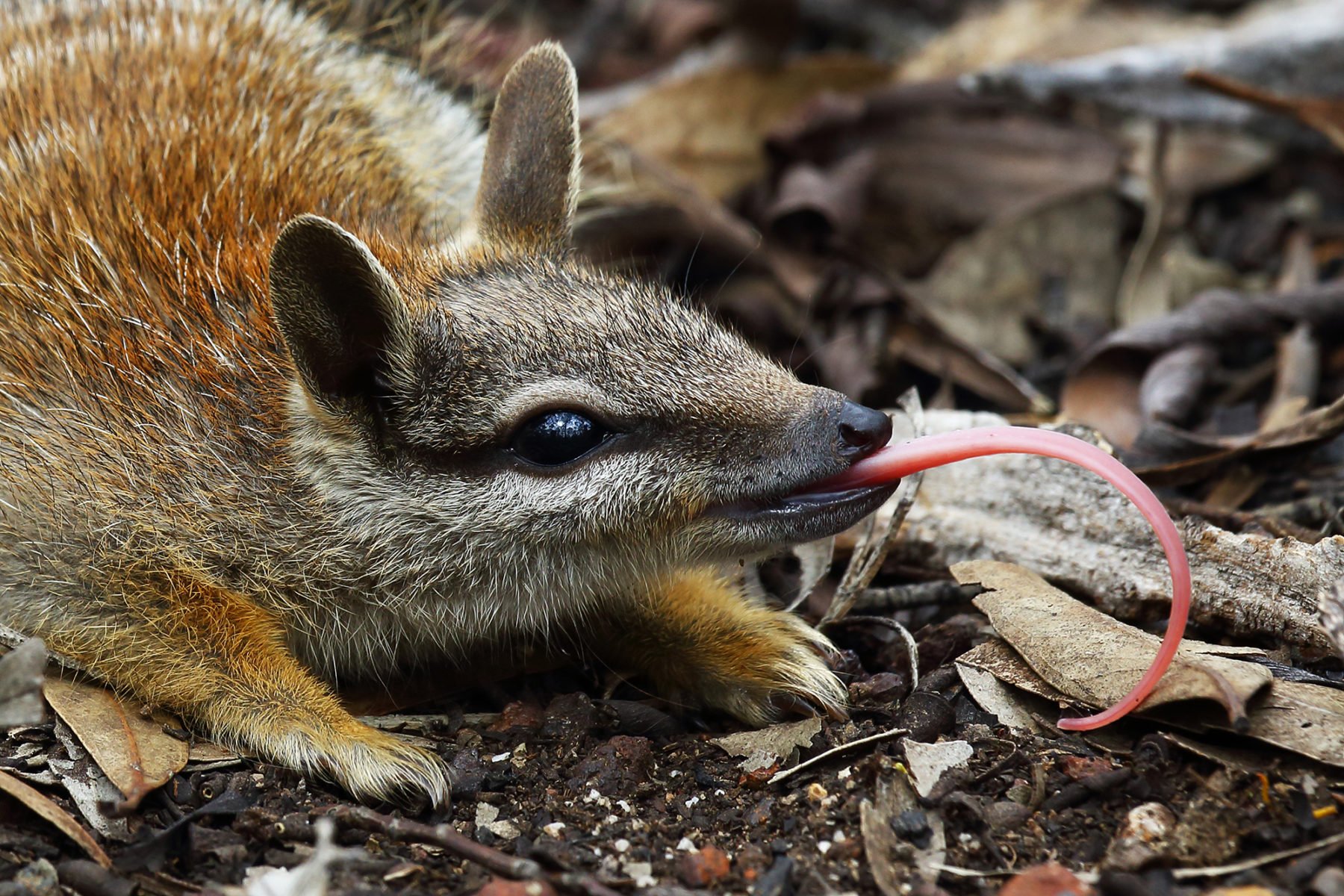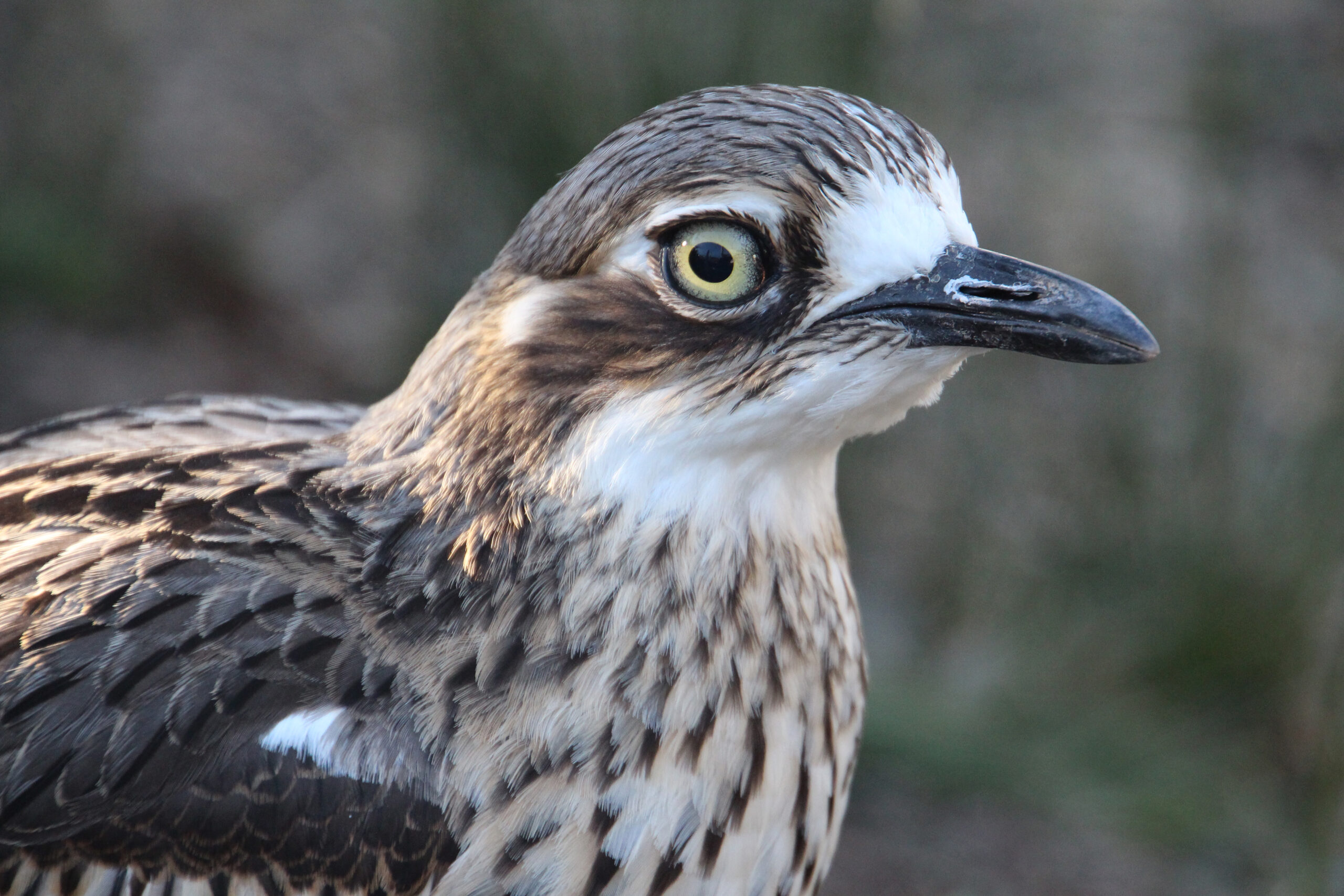| Common name | Numbat |
| Scientific name | Myrmecobius fasciatus |
| Type | Mammal |
| Diet | Termites |
| Average lifespan | Up to five years |
| Size | Up to 25cm long, plus a tail of 10–21cm; Weigh up to 700g (females average 475g, males average 600g) |
Updated October 2024
Also known as the banded anteater, numbats are spectacularly coloured with red-grey fur marked by black-and-white bands, are diurnal – day active – and spend their nights sleeping in dens in tree hollows or burrows dug in the ground. They come out once termites – their main food – become active as the day warms up, at about mid-morning.
Numbats are so unusual that, taxonomically, they are categorised within their own family – Myrmecobiidae – of which they are the sole surviving member. Their closest living relatives are Dasyuridae, which include quolls, Tasmanian devils and the now-extinct Tasmanian tiger.

From about 12 months of age, females reproduce once a year, giving birth to up to four babies at a time. Like all marsupials they’re born tiny, furless and extremely underdeveloped. They spend their first months attached to teats in their mother’s pouch, which compared to most other marsupials is very rudimentary, more of a skin flap than the deep pocket of marsupials such as kangaroos and wallabies.
When the joeys become too big for their mother to carry, she digs a burrow, insulates it with barks and leaves, and leaves them there during the day while she leaves to forage for termites, returning to feed them at night.

A numbat needs to eat about 20,000 termites a day and laps up these insects using a long sticky tongue specially adapted for the purpose. At about 10cm, it’s almost half as long as a numbat’s body.
The biggest threat to numbats is introduced predators – cats and foxes. Birds of prey, which are visual hunters, are the main natural predators of adult numbats. But numbat stripes – a form of camouflage known as disruptive camouflage – make them hard to see in the scrubland and woodland habitats where they live. Joeys – and sometimes adults – are also taken by pythons, goannas, and chuditch. Habitat change is also having an impact.
Historically, numbats occurred right across southern Australia with populations in Western Australia, South Australia, New South Wales, Victoria, and the Northern Territory, in a wide range of habitats, from mulga woodlands and spinifex sandplains to eucalypt woodlands and forests. But their numbers, decimated by foxes and cats, dropped so low late last century that the species came close to extinction twice. Now only two natural populations survive, both in WA. The species has also been reintroduced elsewhere in WA, as well as behind feral predator-proof fences in SA and NSW.

The numbat is known as the noombat by the Noongar people of south-western WA and as the walpurti by desert language groups in WA, SA and the NT.
The numbat features strongly in the cultures of the Noongar people of south-western WA and also the Manytjilytjarra, Ngaanyatjarra, Ngaatjatjarra, Pintupi and Pitjantjatjara of the Central and Western deserts. The Pitjantjatjara believe that during the Dreaming the walpurti (numbat) painted the spots on the large lizard ngintaka (perentie), and in return the ngintaka painted the distinctive stripes on the body of the walpurti.





